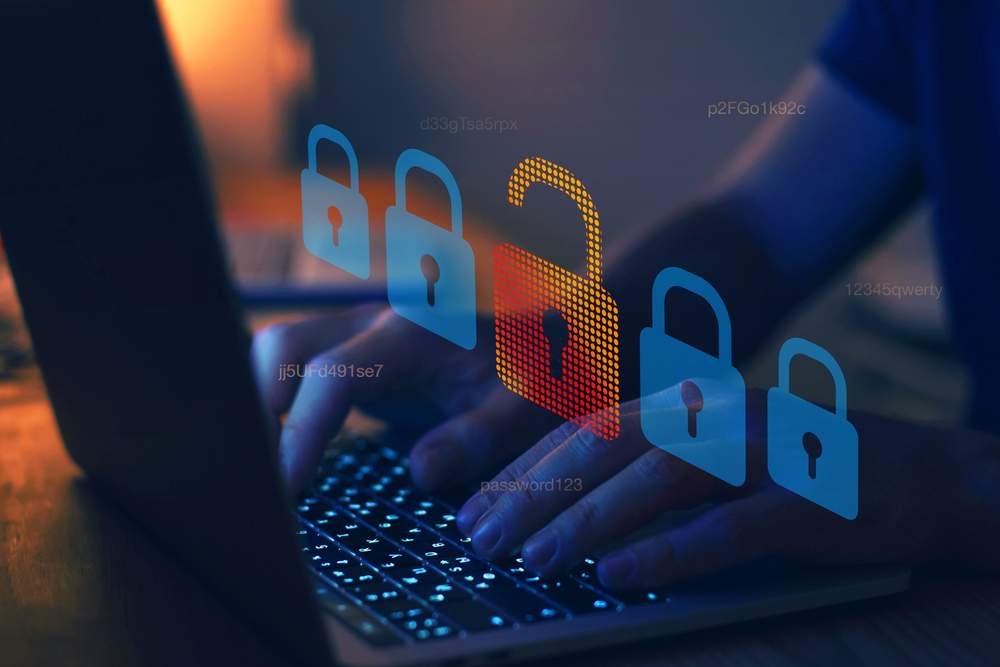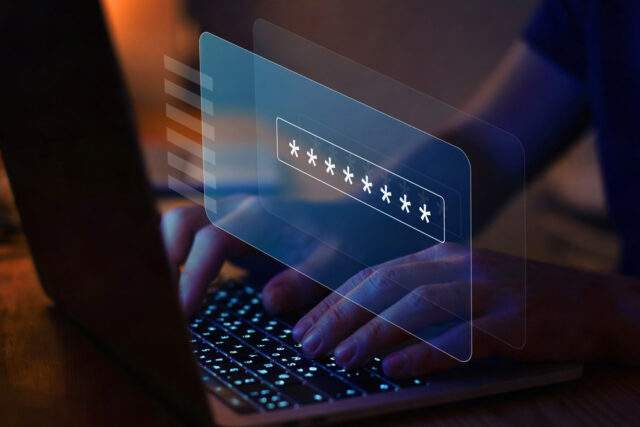What is password cracking and how does it work?
Read our blog to find out what password cracking is, some common tactics that hackers use to do it & how you can avoid it.
Read our blog to find out what password cracking is, some common tactics that hackers use to do it & how you can avoid it.

The shorter and simpler your password, the easier it is to crack. An eight-character complex password takes around five minutes to crack while one with six or fewer characters could be cracked instantly.
Hackers have a wealth of tools at their disposal and plenty of incentive to gain access to your account. To protect yourself, and your organization, you’ll need to get up to grips with the latest information regarding password cracking.
This blog will explore:
Password cracking is a cybersecurity technique used to recover or decipher passwords that have been hashed or encrypted.
It is employed for legitimate security purposes, such as testing the strength of passwords and identifying vulnerabilities, as well as by malicious actors for unauthorized access to systems and data.
Cybersecurity professionals will often use password cracking to help identify and rectify weak or easily guessable passwords.
Depending on their strength and the methods used by attackers, passwords can be relatively easy to crack. Weak passwords, which often include common characteristics, are more vulnerable to attacks like brute force and dictionary attacks.
Here are some features of a weak password:
The legality of password cracking depends on the context and the laws in a specific jurisdiction. In some situations, password cracking is considered legal and necessary, such as when it’s conducted by authorized individuals or organizations to test and improve the security of their own systems or to recover lost or forgotten passwords.
When performed with proper authorization and consent, password cracking in ethical hacking is a legal and necessary practice. However, unauthorized password cracking, where an individual or entity attempts to crack passwords without permission, is generally illegal and can be subject to criminal penalties.
Laws related to password cracking can vary by country and region, so it’s essential to understand the specific legal framework in your jurisdiction.
You can check free online resources, like haveibeenpwned, to verify whether your email address or password has been compromised in a data breach. Additionally, several tell-tale signs indicate your password may have been cracked, including:
Hackers employ a wide range of password cracking techniques, each with varying degrees of risk and effectiveness. Here are some of the most common methods:
Malicious software, such as keyloggers, can capture keystrokes or steal passwords stored on a compromised device, sending the information back to the attacker. This software is typically downloaded unknowingly.
In brute force attacks, hackers systematically try every possible combination of characters to guess a password. While time-consuming, this method can be successful with weak or short passwords.
These attacks use lists of common words or phrases as potential passwords. Hackers try each word in the list in hopes of finding a match with the target’s password and gaining access into the account.
In spidering, hackers use automated tools to scan websites, forums, or social media to find and compile information about an individual. This data can then be used to guess passwords based on personal details.
Rainbow tables are pre-computed databases of hashed passwords. Hackers use these tables to match hashed passwords to their original plaintext forms, revealing the actual passwords.
In offline cracking, hackers obtain a hashed version of a password (commonly from a database) and use various techniques to reverse the hash into the plaintext password.
Password cracking tools are software applications or scripts designed to recover or discover passwords used to protect digital accounts, files, or systems. These tools are used by both malicious and ethical hackers.
Here are two of the most popular password cracking tools:
John The Ripper is one of the most popular open-source password cracking tools. It is designed to crack a variety of password hashes using different algorithms, including traditional Unix crypt, MD5, SHA-1, and many others.
Hashcat is known for its speed and ability to handle a wide range of hashing algorithms. It supports various attack modes, including dictionary attacks, brute force attacks, and rule-based attacks.
As password cracking poses significant security risks, organizations and individuals must implement robust defenses to protect their accounts and sensitive information.
Here are some key practices and defenses against password cracking:
No password is uncrackable, but complexity adds layers of security that can extend the time required for malicious actors to breach your defenses by millions of years. So, when it comes to creating your next password, you’ll want to keep our tips in mind.
Think of your password as your first line of defense. By creating strong, unique passwords, embracing secure password management tools, and staying informed about evolving threats, you’re actively safeguarding your online presence.
Hackers are relentless, but so are we. Instead of exploiting your vulnerabilities, we’ll help you identify them, and provide tailored solutions to help keep you out of harm’s way. CovertSwarm’s password strength testing services are a straightforward way to improve your security stance and mitigate the risk of unauthorized access.
If you have any questions about password cracking or need advice, don’t hesitate to get in touch today.

How to create a strong password and essential best practices
Read our complete guide on how to create a strong password & some essential best practices to level up your cybersecurity.

Multi-Factor Authentication (MFA): what you need to know
Read our blog to find out what Multi-Factor Authentication (MFA) is, why it’s vital to have it and how AI makes it more secure & efficient.

What is spear phishing and how do you prevent it?
Read our guide to find out what spear phishing is, why it’s a problem for organizations and how to prevent it.